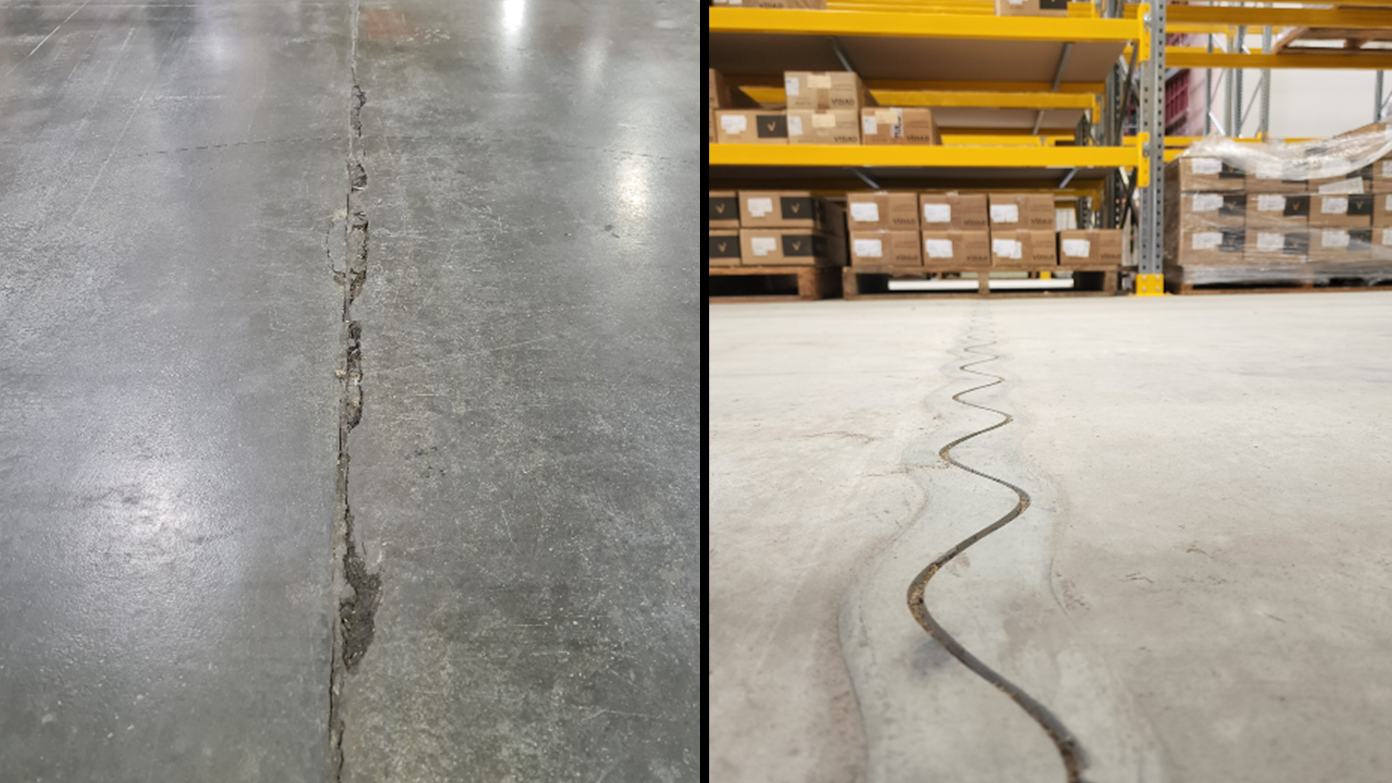The Crucial Role of Industrial Floor Design in Warehouse, Manufacturing, and Distribution Centre’s:
The design of industrial floors in warehouse, manufacturing, and distribution center’s is a critical aspect that often goes unnoticed amidst the construction process. However, neglecting proper floor design can lead to severe consequences that affect the overall efficiency, safety, and longevity of the facility. In particular, the absence of steel armor joints, a key element in enhancing durability and load-bearing capacity, can result in a range of negative outcomes.
Structural Integrity and Load-Bearing Capacity:
Industrial floors bear substantial weight and constant heavy loads from machinery, equipment, storage racks, and materials. A poorly designed floor lacking steel armor joints may not have the necessary reinforcement and structural integrity, leading to cracks, uneven surfaces, and even floor failure. The consequences can be dire, as compromised load-bearing capacity can pose safety risks, halt operations, and incur significant repair costs.
Impact Resistance and Durability:
Warehouses and manufacturing center’s are dynamic environments with high levels of equipment movement, forklift traffic, and material handling operations. In the absence of proper floor design, the lack of impact resistance can result in damages caused by collisions, dropped objects, or repetitive heavy loads. Over time, this can lead to floor deterioration, cracks, and uneven surfaces, negatively impacting operational efficiency and safety.
Expansion and Contraction Management:
Temperature fluctuations commonly expose industrial floors to concrete expansion and contraction. Without suitable design features such as steel armor joints, uncontrolled movement can cause cracks, heaving, and uneven surfaces. These issues not only affect the aesthetic appearance of the floor but also hinder smooth material handling operations. Damaged or uneven floors can impede the movement of equipment, cause accidents, and increase maintenance expenses.
Safety Hazards and Operational Inefficiency:
A poorly designed industrial floor poses significant safety hazards to personnel and equipment within the facility. Uneven surfaces, cracks, and damaged areas can result in trips, falls, and injuries for employees. Moreover, equipment and machinery may experience difficulty in maneuvering on uneven or damaged floors, increasing the risk of accidents and damage to both the equipment and the products being transported. Additionally, inefficient material flow due to uneven surfaces or damaged floors can lead to operational bottlenecks and reduced productivity.
Consequences of Poor Design:
Increased Maintenance and Repair Costs:
Poorly designed industrial floors require frequent maintenance and repairs, resulting in increased operational expenses. Cracked, damaged, or uneven floors necessitate ongoing repairs to ensure a safe working environment and prevent further deterioration. Maintenance costs, including patching, resurfacing, and levelling, can quickly escalate without proper floor design.
Downtime and Disruption of Operations:
Inadequate floor design can lead to unplanned downtime and disruptions in operations. Cracked or failed floors may require immediate repair or replacement, halting production and causing delays in meeting customer demands. This interruption not only impacts productivity but can also result in financial losses and damage to a company’s reputation.
Safety Risks and Legal Liability:
Unsafe industrial floors pose significant risks to employees and visitors, potentially leading to accidents and injuries. Failure to address these hazards can expose companies to legal liabilities, workers’ compensation claims, and penalties. Ensuring a well-designed floor with proper safety measures, such as steel armor joints, is crucial for mitigating risks and maintaining compliance with safety regulations.
Conclusion: The design of industrial floors in warehouse, manufacturing, and distribution center’s plays a pivotal role in ensuring the efficiency, safety, and longevity of the facility. Neglecting proper floor design, including the incorporation of steel armor joints, can have severe consequences. These consequences include compromised structural integrity, reduced load-bearing capacity, diminished impact resistance, inefficient material flow and safety hazards.

